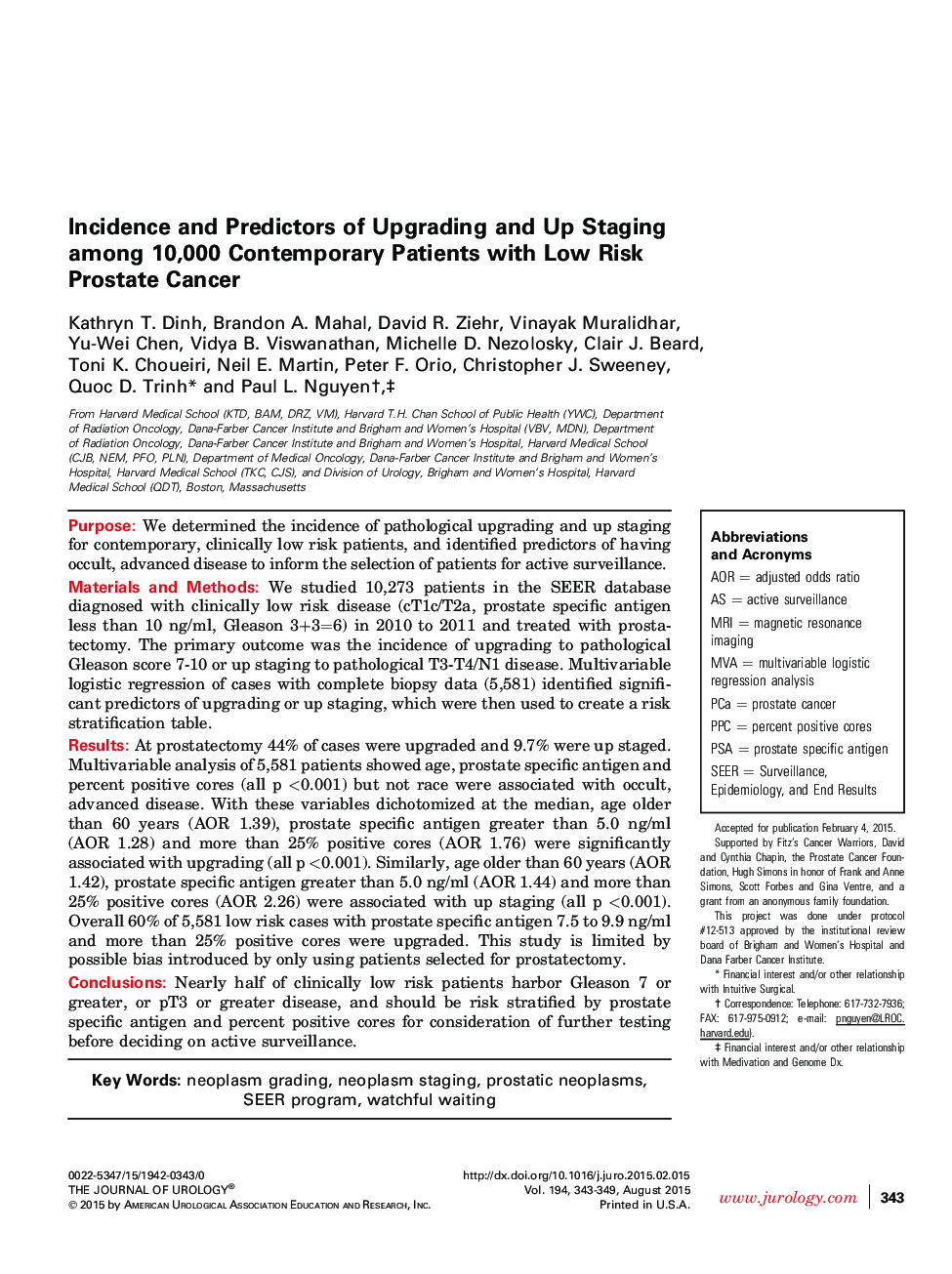| کد مقاله | کد نشریه | سال انتشار | مقاله انگلیسی | نسخه تمام متن |
|---|---|---|---|---|
| 3860736 | 1598887 | 2015 | 7 صفحه PDF | دانلود رایگان |
PurposeWe determined the incidence of pathological upgrading and up staging for contemporary, clinically low risk patients, and identified predictors of having occult, advanced disease to inform the selection of patients for active surveillance.Materials and MethodsWe studied 10,273 patients in the SEER database diagnosed with clinically low risk disease (cT1c/T2a, prostate specific antigen less than 10 ng/ml, Gleason 3+3=6) in 2010 to 2011 and treated with prostatectomy. The primary outcome was the incidence of upgrading to pathological Gleason score 7-10 or up staging to pathological T3-T4/N1 disease. Multivariable logistic regression of cases with complete biopsy data (5,581) identified significant predictors of upgrading or up staging, which were then used to create a risk stratification table.ResultsAt prostatectomy 44% of cases were upgraded and 9.7% were up staged. Multivariable analysis of 5,581 patients showed age, prostate specific antigen and percent positive cores (all p <0.001) but not race were associated with occult, advanced disease. With these variables dichotomized at the median, age older than 60 years (AOR 1.39), prostate specific antigen greater than 5.0 ng/ml (AOR 1.28) and more than 25% positive cores (AOR 1.76) were significantly associated with upgrading (all p <0.001). Similarly, age older than 60 years (AOR 1.42), prostate specific antigen greater than 5.0 ng/ml (AOR 1.44) and more than 25% positive cores (AOR 2.26) were associated with up staging (all p <0.001). Overall 60% of 5,581 low risk cases with prostate specific antigen 7.5 to 9.9 ng/ml and more than 25% positive cores were upgraded. This study is limited by possible bias introduced by only using patients selected for prostatectomy.ConclusionsNearly half of clinically low risk patients harbor Gleason 7 or greater, or pT3 or greater disease, and should be risk stratified by prostate specific antigen and percent positive cores for consideration of further testing before deciding on active surveillance.
Journal: The Journal of Urology - Volume 194, Issue 2, August 2015, Pages 343–349
